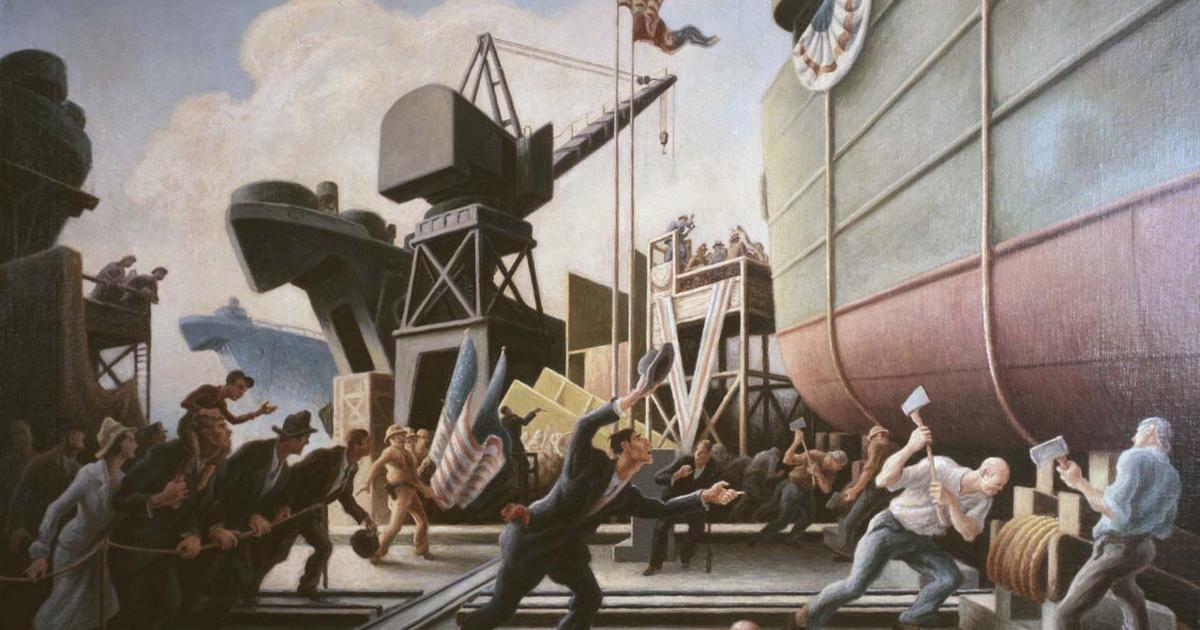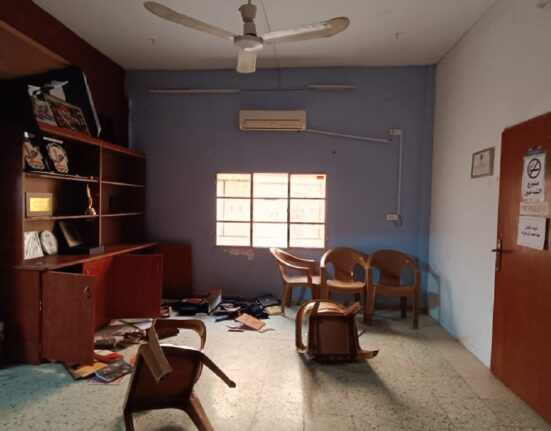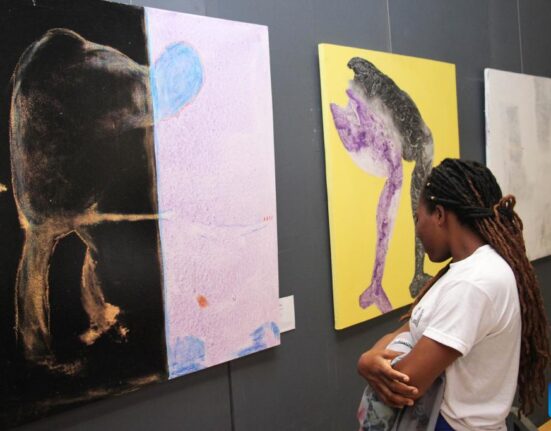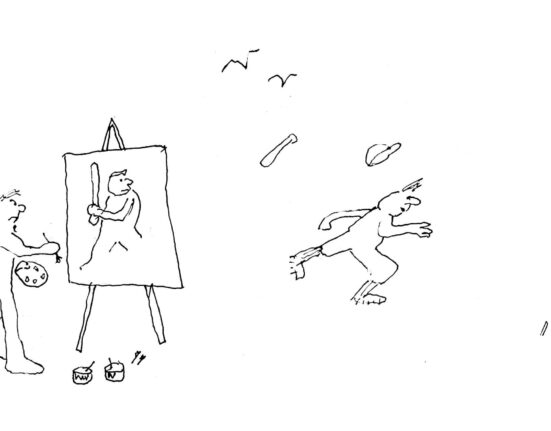After Pearl Harbor was attacked on Dec. 7, 1941, a massive effort was undertaken to prepare U.S. forces for war.
Thomas Hart Benton was among the American artists assigned to produce a visual record of the mobilization efforts for the U.S. Navy. He substituted the common tasks of country folks that had popularized his work in the 1930s with the daily activities of the ordinary sailor. The resulting series of original works now in the Naval Art Collection will be on display at the Hoyt Center for the Arts Jan. 2 through March 21 in the exhibit, “The Art & Objects of War.”
The exhibit includes not only paintings, but uniforms, medals, photographs, letters, ration books and other artifacts sourced from Lawrence County collections, the Soldiers and Sailors Memorial Hall and Museum, the Lawrence County Historical Society and Lawrence County veterans from all branches.
The Naval Art Collection was commissioned by Abbott Laboratories, a pharmaceutical company in Chicago, which produced what were considered “wonder drugs” of that time. The U.S. War Department, now known as the Department of Defense, contracted Abbott to produce huge quantities of these drugs for military use. Abbot, in turn, commissioned artists to build public morale to support the war effort, which resulted in a now historic collection of images documenting an important period of cultural heritage.
Benton was an American Regionalist painter, muralist and printmaker who enlisted in the Navy twice. First in support of World War I and then again during World War II.
He was born in 1889 into an influential family of politicians. His father was a lawyer and was elected four times to Congress. His great-uncle and namesake, Thomas Hart Benton, was one of the first two U.S. senators elected from Missouri. His father thus sent him to Western Military Academy in 1905, hoping to shape him for a political career. However, Benton rebelled and with his mother’s support left the military academy to study art at The Chicago Art Institute in 1907. In 1909, he moved to Paris to continue studies at the Academie Julian. By 1912, he was ready to begin his art career in New York City.
By 1917, the United States had entered World War I. The global conflict compelled Benton to voluntarily enlist in the Navy. Stationed in Norfolk, Virginia, he was directed to make drawings and illustrations of shipyard work and life, and this requirement for realistic documentation strongly affected his later style.
Later in the war, he was classified as a “camoufler” and drew the camouflaged ships that entered Norfolk harbor. His work was required for several reasons: to ensure that U.S. ship painters were correctly applying the camouflage schemes, to aid in identifying U.S. ships that might later be lost and to have records of the ship camouflage of other Allied navies. Benton later said that his work for the Navy “was the most important thing, so far, I had ever done for myself as an artist.”
During World War II, Benton enlisted again at the age of 55, serving as a commissioned artist-correspondent with privileged access to shipyards and submarines from 1943-44.
As the story goes, when Benton heard about the attack on Pearl Harbor, he locked himself in his studio for several weeks, producing seven large paintings that became known as the Peril of War series. They attracted the attention of Abbott Laboratories and were purchased to publish in a book and as posters. Eighteen million copies were distributed across the country, which led Abbott to consider how they could do more to support the war effort through art.
Charles Downs, director of advertising for Abbott Laboratories, had already built a relationship with Reeves Lewenthal, the executive director of the Associated American Artists Gallery of New York City and Chicago, to source art and artists for its monthly publications in 1935. Both those magazines printed for doctors and employees used art commissioned or purchased by the company to illustrate articles or break up the monotony of the reading material. This was an age where advertising and illustrative material was still reproduced largely from original art.
As the demand for Abbott’s products became more evident, Abbott president S. DeWitt Clough called his advisors together to inform them that he did not want to profit from the war. He asked them to find a way to funnel the profits back to the people. It was Downs who came up with the idea of creating an art collection depicting activities of war as a historic record and a means to boost one’s conscience and patriotism.
What followed was a joint venture by Abbott, the Associated American Artists and the public relations offices at the War Department to identify, fund and house artists at selected sites. Several separate art collections were created: Army Medical, Navy Aviation, Navy and Marine Amphibious Operations and more. Benton was one of 18 artists commissioned to produce work of naval activity. Others included Joseph Hirsch, Lawrence Beall Smith, Georges Schreiber, Kerr Eby and Reginald Marsh.
Each body of work produced for the Abbott Art Collection toured museums across America. Abbott additionally produced small books of these sub-collections for the exhibits, which were made available to the public and made extensive contributions of art to the U.S. Treasury Department for war bond poster designs. Exhibits of these poster designs also circulated through the country’s art museums.
While it was their intent to boost morale, incentivize support and record history, it is unlikely Abbott Industries truly grasped the enormity of their contributions to the American people over time. According to their archives, it certainly had an immediate impact on its employees who over-subscribed to seven war bond drives after Pearl Harbor. For current and future generations, the Abbott Art Collection provides a uniquely American view of the events of World War II.
The free exhibition will be open to the public from 11 a.m. to 8 p.m. Tuesdays, Wednesdays and Thursdays and 11 a.m. to 4 p.m. Fridays and Saturdays.
In addition, several activities are planned around the exhibit including:
•A gallery talk, “The Naval Art of Thomas Hart Benton,” presented by Dr. Henry Adams at 6 p.m. Jan. 25. A professor at Case Western University in Cleveland, Adams offers a lively discussion on Benton’s role as a Navy artist. Adams earned his master’s and doctorate degrees from Yale, receiving the Frances Blanshard Prize for the best doctoral dissertation in art history. He is the author of more than 300 articles including “Tom and Jack: The Intertwined Lives of Thomas Hart Benton and Jackson Pollock.
•A gallery talk, “Artists at War,” presented by Andrew Henley at 6 p.m. Feb. 15. A local historian, Henley offers insight into artists’ varied responses to war over the centuries. A Westminster graduate, Henley earned his master’s degree in library and information science from the University of Pittsburgh and currently serves as director of the New Castle Public Library.
•Salute to Military Families, 6 to 8 p.m. Feb. 29. Free activities and tours for active military families. Military families will receive a free family membership to the Hoyt with military ID. Featuring a question and answer session with World War II veteran Wally King.
•Gallery walk, “The Stories behind the Soldiers & Sailors,” presented by Michael Kraus at 6 p.m. March 7. Kraus, the Soldiers & Sailors Museum curator, offers a walking tour through the collection providing insight into the objects and the stories behind them.
For more information on any of the events, call (724) 652-2882 or visit www.hoytartcenter.org.







